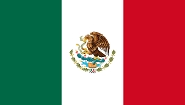Government/Policy

June 9, 2019
Tariffs on Mexico Averted in Immigration Agreement
Written by Sandy Williams
Mexico will not have to face tariffs from the U.S. after coming to an agreement with the Trump administration on immigration. The 5 percent tariff on all goods imported from Mexico was scheduled to begin Monday, but the president called off the punitive measures in a tweet on Friday evening.
Said Trump on Twitter: “I am pleased to inform you that The United States of America has reached a signed agreement with Mexico. The Tariffs scheduled to be implemented by the U.S. on Monday, against Mexico, are hereby indefinitely suspended. Mexico, in turn, has agreed to take strong measures to stem the tide of Migration through Mexico, and to our Southern Border. This is being done to greatly reduce, or eliminate, Illegal Immigration coming from Mexico and into the United States. Details of the agreement will be released shortly by the State Department. Thank you!”
A joint declaration was issued by the U.S. Department of State on Friday stating that Mexico will take “unprecedented steps” to curb illegal migration including deploying its National Guard to its southern border and taking action to “dismantle human smuggling and trafficking organizations.”
Migrants seeking asylum in the U.S. will have to remain in Mexico while their asylum claim is processed. Mexico agreed to provide jobs, healthcare and education to those individuals while in Mexico.
The United States, on its part, pledged to strengthen bilateral cooperation to secure the common border, accelerate the asylum claim process and work towards addressing the causes of migration from Central America. Further actions will take by the two nations if the agreement fails to have the expected results in stemming illegal immigration.
Trump “suspended the tariffs indefinitely” while simultaneously retaining the right to impose them should Mexico not hold up its end of the deal.
Lawmakers and businesses breathed a sigh of relief that the tariffs would not be issued, potentially causing catastrophic damage to both the Mexican and U.S. economies. Republicans exhibited an uncharacteristic show of force against the president, warning they would veto any attempt to levy the tariffs.
House Speaker Nancy Pelosi (D-Calif.) admonished the administration for threatening a strong ally with trade tariffs to achieve an unrelated policy change.
“President Trump undermined America’s preeminent leadership role in the world by recklessly threatening to impose tariffs on our close friend and neighbor to the south,” said Pelosi. “Threats and temper tantrums are no way to negotiate foreign policy.”







